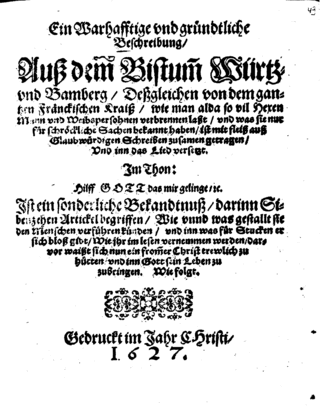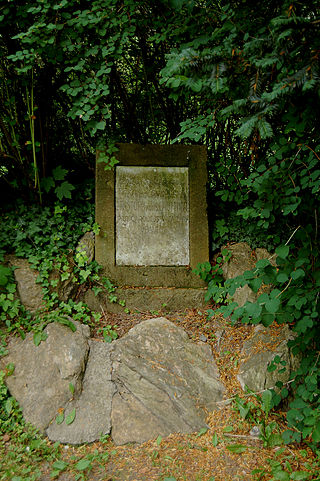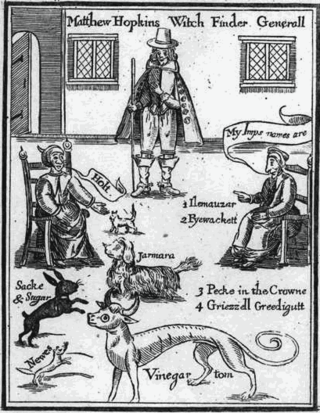
A witch-hunt, or a witch purge, is a search for people who have been labeled witches or a search for evidence of witchcraft. Practicing evil spells or incantations was proscribed and punishable in early human civilizations in the Middle East. In medieval Europe, witch-hunts often arose in connection to charges of heresy from Christianity. An intensive period of witch-hunts occuring in Early Modern Europe and to a smaller extent Colonial America, took place about 1450 to 1750, spanning the upheavals of the Counter Reformation and the Thirty Years' War, resulting in an estimated 35,000 to 50,000 executions. The last executions of people convicted as witches in Europe took place in the 18th century. In other regions, like Africa and Asia, contemporary witch-hunts have been reported from sub-Saharan Africa and Papua New Guinea, and official legislation against witchcraft is still found in Saudi Arabia and Cameroon today.

The Salem witch trials were a series of hearings and prosecutions of people accused of witchcraft in colonial Massachusetts between February 1692 and May 1693. More than 200 people were accused. Thirty people were found guilty, 19 of whom were executed by hanging. One other man, Giles Corey, died under torture after refusing to enter a plea, and at least five people died in jail.

The North Berwick witch trials were the trials in 1590 of a number of people from East Lothian, Scotland, accused of witchcraft in the St Andrew's Auld Kirk in North Berwick on Halloween night. They ran for two years, and implicated over 70 people. These included Francis Stewart, 5th Earl of Bothwell, on charges of high treason.

The Würzburg witch trials of 1625–1631, which took place in the self-governing Catholic Prince-Bishopric of Würzburg in the Holy Roman Empire in present-day Germany, formed one of the biggest mass trials and mass executions ever seen in Europe, and one of the largest witch trials in history.

The Bury St Edmunds witch trials were a series of trials conducted intermittently between the years 1599 and 1694 in the town of Bury St Edmunds in Suffolk, England.
The Vardø witch trials, which took place in Vardø in Finnmark in Northern Norway in 1621, was the first major witch trial of Northern Norway, and one of the biggest witch trials in Scandinavia. It was the first of the three big mass trials of Northern Norway, followed by the Vardø witch trials (1651–1653) and the Vardø witch trials (1662-1663), and one of the biggest witch trials in Norway.
The Pappenheimer Case centered around a family who were tried and executed for witchcraft in 1600 in Munich, Bavaria, Germany. The family were executed, along with accomplices they were forced to name under torture, after a show trial as scapegoats for a number of unsolved crimes committed years back in a display of extreme torture intended to deter the public from crime. The witch trial resulted in the death of twelve people: four of the Pappenheimer family and two of their accused accomplices in the first trial, followed by the remaining member of the family and five other accomplices in the second trial. The trial was of one of the most well-publicized witch trials in German history.

The Witch Trials of Trier took place in the independent Catholic diocese of Trier in the Holy Roman Empire in present day Germany between 1581 and 1593, and were perhaps the largest documented witch trial in history in view of the executions. They formed one of the four largest witch trials in Germany alongside the Fulda witch trials, the Würzburg witch trial, and the Bamberg witch trials.
Køge Huskors was the name for a witch trial in the city of Køge in Denmark, which took place in 1608–1615. It is one of the best known witch trials in Denmark. It led to the execution of between fifteen and twenty women by burning at the stake.
Gyde Spandemager was an alleged Danish witch. She was one of the first women executed for sorcery in Denmark and in Scandinavia.

Northern Moravia witch trials, also known as Boblig witch trials was a series of witch trials which occurred in the Jeseník and Šumperk area in the present-day Czech Republic, between 1622 and 1696. They are among the largest and most well known Czech witch trials.

The trials of the Pendle witches in 1612 are among the most famous witch trials in English history, and some of the best recorded of the 17th century. The twelve accused lived in the area surrounding Pendle Hill in Lancashire, and were charged with the murders of ten people by the use of witchcraft. All but two were tried at Lancaster Assizes on 18–19 August 1612, along with the Samlesbury witches and others, in a series of trials that have become known as the Lancashire witch trials. One was tried at York Assizes on 27 July 1612, and another died in prison. Of the eleven who went to trial – nine women and two men – ten were found guilty and executed by hanging; one was found not guilty.
The Rugård witch trials took place at Rugård manor, and the community of Ebeltoft close to it, on Jylland in Denmark in 1685–1686. It was the most significant witch trial in Denmark since the Rosborg witch trials of 1639, and caused a wave of new witch trials on Jylland after a period of diminishing witch hunts. The case led to the issue of a new law banning local courts from handing down and enacting death sentences without confirmation of the national high court, a law which interrupted the local witch hunt and eventually stopped it nationwide.
Witch trials and witch related accusations were at a high during the early modern period in Britain, a time that spanned from the beginning of the 16th century to the end of the 18th century.

Sweden was a country with few witch trials compared to other countries in Europe. In Sweden, about four hundred people were executed for witchcraft prior to the last case in 1704. Most of these cases occurred during a short but intense period; the eight years between 1668 and 1676, when the witch hysteria called det stora oväsendet took place, causing a large number of witch trials in the country. It is this infamous period of intensive witch hunt that is most well known and explored and given attention.

The Witch trials in Denmark are poorly documented, with the exception of the region of Jylland in the 1609–1687 period. The most intense period in the Danish witchcraft persecutions was the great witch hunt of 1617–1625, when most executions took place, which was affected by a new witchcraft act introduced in 1617.
The Witch trials in Iceland were conducted by the Danish authorities, who introduced the belief in witchcraft as well as the Danish Witchcraft Act in the 17th century, and then stopped the persecutions. Similar to the case of Witch trials in Latvia and Estonia, the witch trials were introduced by a foreign elite power in an area with weak Christianity, in order to ensure religious conformity. Iceland was uncommon for Europe in that magic as such was viewed favorably on the island, and the majority of those executed were men, which it had in common with only the witch trials in Finland.
The witch trials in Norway were the most intense among the Nordic countries. There seems to be around an estimated 277 to 350 executions between 1561 and 1760. Norway was in a union with Denmark during this period, and the witch trials were conducted by instructions from Copenhagen. The authorities and the clergy conducted the trials using demonology handbooks and used interrogation techniques and sometimes torture. After a guilty verdict, the condemned was forced to expose accomplices and commonly deaths occurred due to torture or prison. Witch trials were in decline by the 1670s as judicial and investigative methods were improved. A Norwegian law from 1687 maintained the death penalty for witchcraft, and the last person to be sentenced guilty of witchcraft in Norway was Birgitte Haldorsdatter in 1715. The Witchcraft Act was formally in place until 1842.
The Witch trials in Finland were conducted in connection to Sweden and were relatively few with the exception of the 1660s and 1670s, when a big witch hunt affected both Finland and Sweden. Finland differed from most of Europe in that an uncommonly large part of the accused were men, which it had in common with the witch trials in Iceland. Most of the people accused in Finland were men, so called "wise men" hired to perform magic by people. From 1674 to 1678, a real witch hysteria broke out in Ostrobothnia, during which twenty women and two men were executed.

In England, witch trials were conducted from the 15th century until the 18th century. They are estimated to have resulted in the death of perhaps 500 people, 90 percent of whom were women. The witch hunt was at its most intense stage during the English Civil War (1642–1651) and the Puritan era of the mid-17th century.










